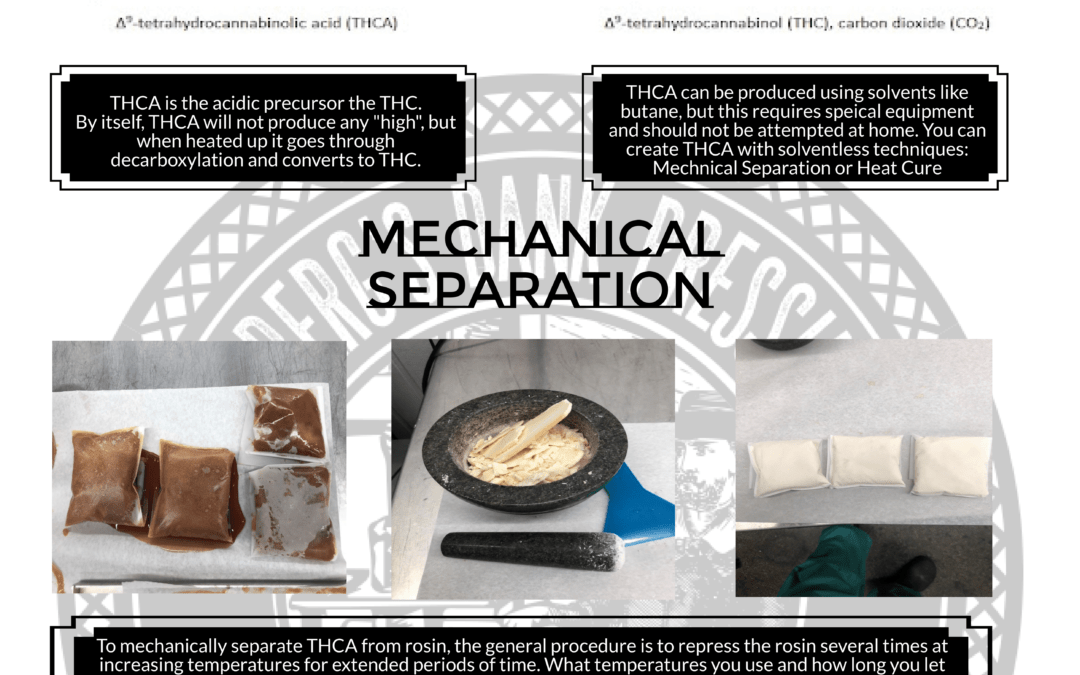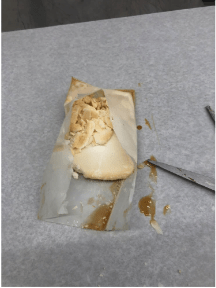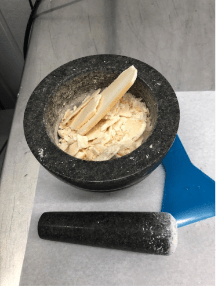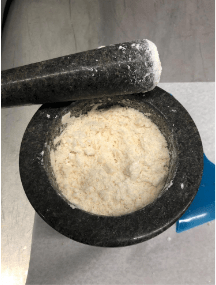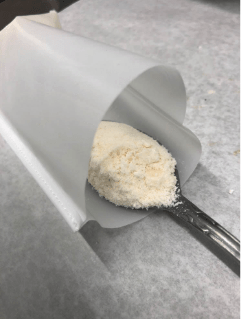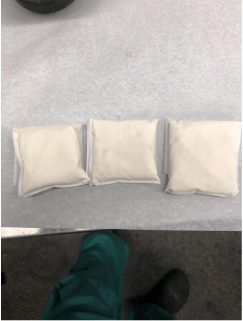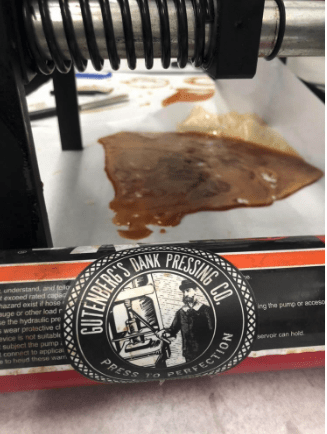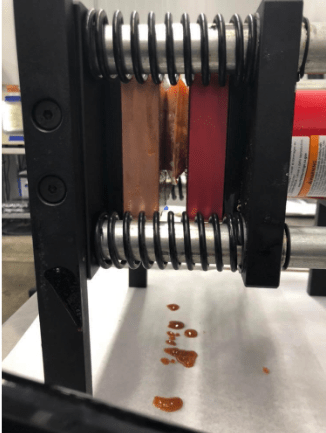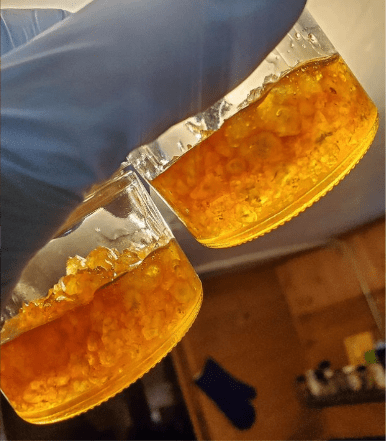How to Make THCA
Solventless THCA Production
What is THCA?
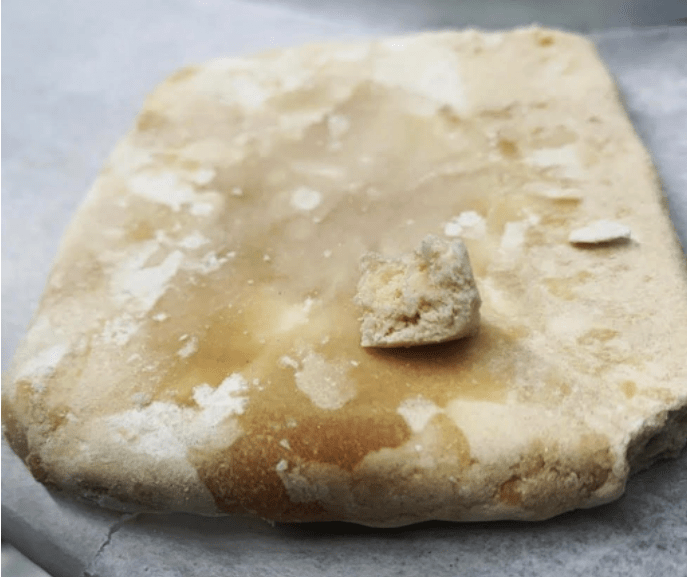
Trying to learn how to make solventless THCA? THCA, like Delta-9 THC and CBD, is a cannabinoid found in the cannabis plant (marijuana or hemp). Cannabinoids are the active part of the plant and are responsible for the effects produced when using cannabis. The “A” in THCA stands for “acid”. THCA is the acidic precursor of THC.
So what does THCA look like? Well, THCA, when extracted, comes in a crystalline form. Many refer to these crystals as “diamonds”. These diamonds are one of the purest cannabis extracts out there. Because they are just pure THCA, the diamonds are completely odorless and tasteless. The flavor of many THCA products comes from terpenes (the flavor of cannabis) that are added back in post-production. THCA diamonds mixed with terpene sauce have become a fairly popular product in the market.
Some question if “pure” is a good thing. We know a lot about the “entourage effect” and how using the full-spectrum of cannabinoid and terpenes found in cannabis has significantly more benefits than just THC alone. By isolating THCA from the other cannabinoids and terpenes, we are potentially missing out on the most beneficial aspects of the cannabis plant. As we mentioned, many do mix the terpenes back into the THCA, but this begs the question, “why did we ever separate them to begin with”. (Nick Bucci)
You are now probably wondering what effects THCA has. Without further processing, THCA does not have psychoactive effects (it will not make you high). The benefits of THCA occur when it is converted into THC. This happens through a process called decarboxylation or decarbing for short. Decarbing THCA removes the acidic part of the molecule (the “A” in THCA), leaving behind THC. To decarb THCA, all you need to do is heat it up to over 220℉. You can do this simply by smoking THCA products. The decarbing will happen as you smoke it so by the time it enters your body, THCA has already converted THC.
Maybe the best part of THCA is that you can make it at home! Using just rosin, a sealed jar, a heat source you can do a heat cure to produce rosin diamonds. With Rosin bags, parchment paper, and a rosin press, you can make your own THCA crystals from rosin. There are other ways to make THCA using solvents (BHO), but this requires proper lab equipment and specialized skills so we do not suggest doing this at home.
The rest of this article is going to cover how to make THCA using solventless techniques. We talked with some experts in the field who have great experience making solventless THCA from rosin and we are going to share some of their tips, tricks, and techniques. Let’s dive right in!
Table of Contents
How to Make Solventless THCa
How to Make Solventless THCa: Mechanical Separation
Mechanically separating THCA from your rosin is a bit of a tedious task, but rewarding in the end. By “mechanical separation” we are referring to your physically putting in the hard work to press and repress the rosin in long increments, until terpenes have separated from the rosin, leaving behind pure THCA. To do this, you will need rosin bags, a rosin press, parchment paper, and some rosin with a budder consistency.
The budder consistency is very important as most other consistencies (sauce, shatter, etc.) will most likely not successfully produce THCA with mechanical separation. The team at Noble Road Rosin only uses “chunky cold cure batter”. Some believe the drier the rosin, the better for isolation.
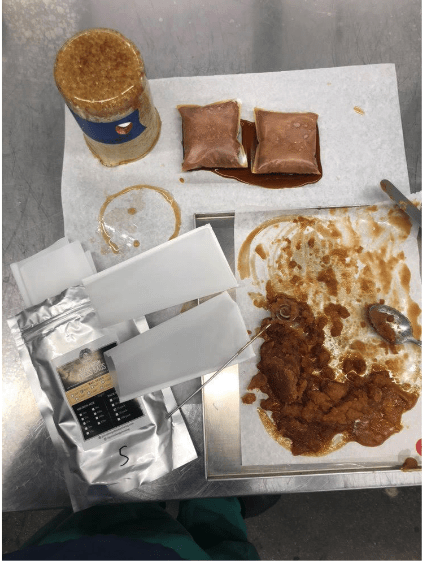
You will want to use a low micron rosin bag as the small spaces will hold in that precious THCA while letting the rest of the terpenes and cannabinoids flow through. Chris Killinger, lab manager for Prime ATC in New Hampshire, uses custom made 5µ bags (for custom bags, message us here). You can also find success with 15µ, 25µ, or 37µ bags. We would not suggest exceeding 37µ.
To begin, place your rosin into the rosin bag, being careful to not leave any air pockets. Leave about a ½ inch space at the top of the bag so you can fold that over to “close” the bag. Next, line your rosin press plates with parchment paper to catch the terpene runoff. It can be helpful to fold the parchment paper so that the terpenes will directionally flow where you want them. This helps later with collection. Chris from Prime ATC actually places his rosin press horizontally so that the terpene runoff will just drip off the plates onto the collection parchment paper.
Now we are ready for the actual pressing. Each press will be a bit different so it may take some practice to develop the “feel” for this. Generally, you want to press the rosin at increasingly higher temperatures for extended periods (3 to 45 minutes per press). We know this is a wide range of time for the rosin to be on the press, but as we said, every press is a bit different and everyone develops their own techniques that work for them. What works for you may not be what has worked for someone else or what will work for you again.
The temperatures we are about to list as being used to isolate THCA are based on testimony from Chris Killinger at Prime ATC, the team at Noble Road Rosin, and a variety of other hashmakers we have talked with. Again, this is not an exact science, but a general guide. The team at Noble Road Rosin like to begin with 100℉ and gradually increase from there. For example, press at 100℉ for several minutes and low pressure. Then press again at around 135℉ for a few more minutes.
Then keep repeating this at increasing temperatures. Usually the final temperature used is about 220℉-250℉. Generally, you will want to use higher pressures with higher temperatures. As you progress, some choose to use a new, clean rosin bag for each press, but this is optional as long as the bag does not break. Chris from Prime ATC begins his isolation at 180℉ for 3-4 minutes. He then removes the THCA from the rosin bag and grinds it to homogenize the product. Then it is placed back into a new, clean rosin bag and repressed at 250℉ for around 5 minutes.
The runoff made when producing THCA with mechanical separation can be used in a number of ways. It can be collected and reintroduced to the THCA. This can be a good way to create a unique product because no one else has that terpene mixture and you can add back in however much you wish. You can also collect the runoff, decarb it, and use it as tincture or vape liquid.
Jar Tech / Heat Cure
You may also use a heat cure to separate THCA from rosin. This is commonly referred to as Jar Tech. The general principle is that you use a heat source to warm the rosin in a sealed jar. The change in temperature also causes a change in pressure which can produce THCA diamonds that have separated from the terpene “sauce”. Solventless diamonds and sauce have become quite a popular product on the market.
To properly perform a heat cure is pretty straight forward, but the little things can make all the difference. The first thing you need to do a heat cure is PATIENCE. The cure can last anywhere from half a day to two weeks or more. Generally, the lower the temperature, the longer a cure will take. Using higher temperatures can speed things up, but you risk losing some of the terpenes you managed to retain during the press.

With your rosin in a sealed glass jar, place it in or on a heat source such as a heat plate or oven. The range of temperatures used is generally about 90℉ to 220℉. Any lower and it is considered a cold cure and may not produce the desired results. Any higher and you will decarb the THCA and it will be lost. During the cure you should see the rosin begin to bubble up.
This is a good thing because it usually means the terpenes are separating. When you stop is up to you. It may take some practice to develop a feel for it, but that is all part of the fun! When you see THCA begin to form into “diamonds”, that is usually a good indicator your cure is complete. From here you can keep the product as diamonds and sauce or use a rosin bag to filter the sauce from the THCA diamonds.

